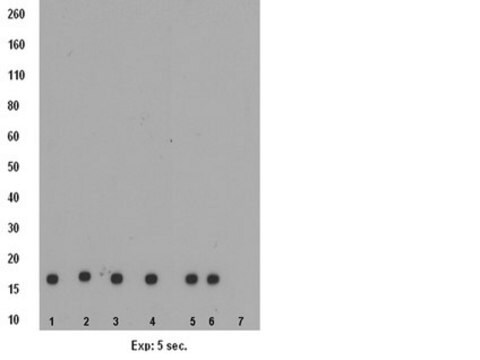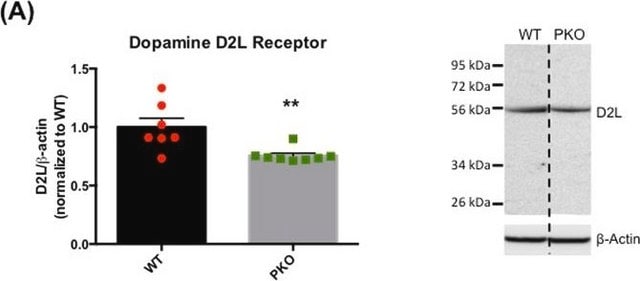07-450
Anti-monomethyl-Histone H3 (Lys9) Antibody
Upstate®, from rabbit
Synonym(s):
H3K9me1, Histone H3 (mono methyl K9), H3 histone family, member T, histone 3, H3, histone cluster 3, H3
About This Item
Recommended Products
biological source
rabbit
Quality Level
antibody form
purified immunoglobulin
antibody product type
primary antibodies
clone
polyclonal
species reactivity
chicken, mouse, human
manufacturer/tradename
Upstate®
technique(s)
dot blot: suitable
immunocytochemistry: suitable
inhibition assay: suitable (peptide)
western blot: suitable
isotype
IgG
NCBI accession no.
UniProt accession no.
shipped in
wet ice
target post-translational modification
monomethylation (Lys9)
Gene Information
human ... HIST1H3F(8968)
General description
Specificity
Immunogen
Application
Specificity confirmed by the ability of 10 μM of the immunizing peptide to abolish detection of histone H3 in immunoblot analysis of HeLa acid extracts (Figure B, Lane 2). No signal reductions were detected with preincubation with 10 μM di- or trimethyl-lysine 9 or di- or trimethyl-lysine 27 modified peptides. Some signal reduction detected after preincubation with 10 μM monomethyl-lysine 27 modified peptide (Figure B, Lane 5, page 2).
Immunocytochemistry & Dot Blot: Reported by an independent laboratory1-4.
Epigenetics & Nuclear Function
Histones
Quality
Western Blot Analysis:
0.1-0.2 μg/mL had detected monomethylated histone H3 in acid extracted proteins from HeLa cells, but did not detect unmethylated recombinant Histone H3 (Catalog # 14-411).
Target description
Physical form
Storage and Stability
Handling Recommendations: Upon receipt, and prior to removing the cap, centrifuge the vial and gently mix the solution. Aliquot into microcentrifuge tubes and store at -20°C. Avoid repeated freeze/thaw cycles, which may damage IgG and affect product performance.
Analysis Note
HeLa cell extract
Other Notes
Legal Information
Disclaimer
Not finding the right product?
Try our Product Selector Tool.
Storage Class Code
10 - Combustible liquids
WGK
WGK 1
Certificates of Analysis (COA)
Search for Certificates of Analysis (COA) by entering the products Lot/Batch Number. Lot and Batch Numbers can be found on a product’s label following the words ‘Lot’ or ‘Batch’.
Already Own This Product?
Find documentation for the products that you have recently purchased in the Document Library.
Our team of scientists has experience in all areas of research including Life Science, Material Science, Chemical Synthesis, Chromatography, Analytical and many others.
Contact Technical Service








